The Everest Three High Pass Service Trek presents a unique blend of adventure and culture in the heart of the Himalayas. Over 19 days, trekkers traverse challenging yet rewarding paths through iconic passes like Renjo La, Cho La, and Kongma La, all while soaking in breathtaking views of Mount Everest and the serene Gokyo Valley. With a well-planned itinerary and local insights, it ensures safety and comfort at every turn. But what should trekkers really pack for such an expedition, and when’s the best time to embark on this journey?
Key Points
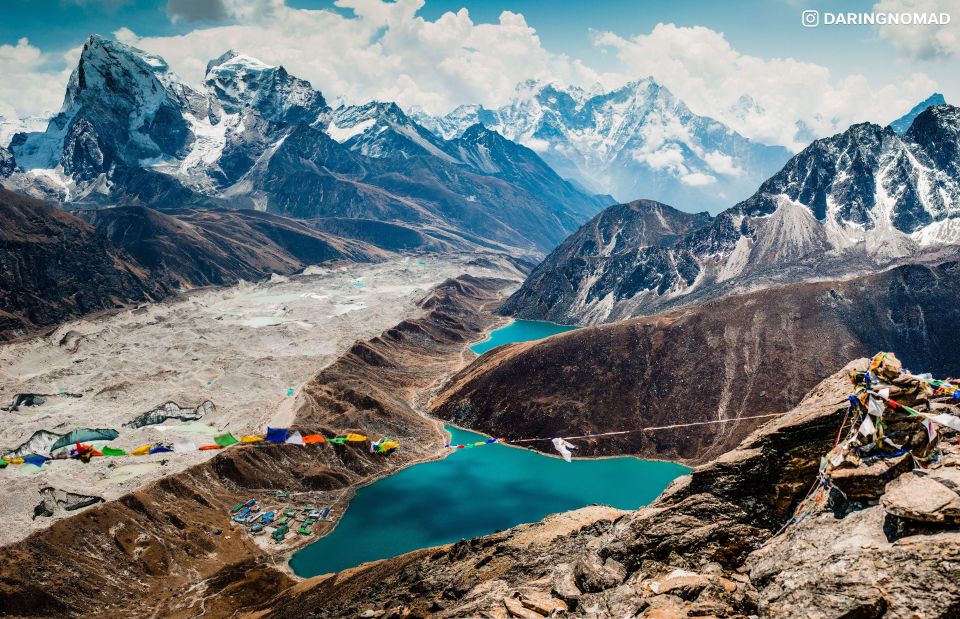
- The Everest Three High Pass Service Trek is a 19-day journey featuring iconic passes: Renjo La, Cho La, and Kongma La.
- Trekking includes stunning views of Mount Everest from Kala Patthar and exploration of the beautiful Gokyo Valley.
- The trek starts in Kathmandu, with a flight to Lukla and subsequent treks through Phakding, Namche Bazaar, and other key locations.
- Essential inclusions cover permits, accommodation, meals, English-speaking guides, and round-trip flights to Lukla, ensuring a comprehensive trekking experience.
- Optimal trekking seasons are spring (March-May) and autumn (late September-November) for the best weather and visibility.
Trek Overview and Highlights
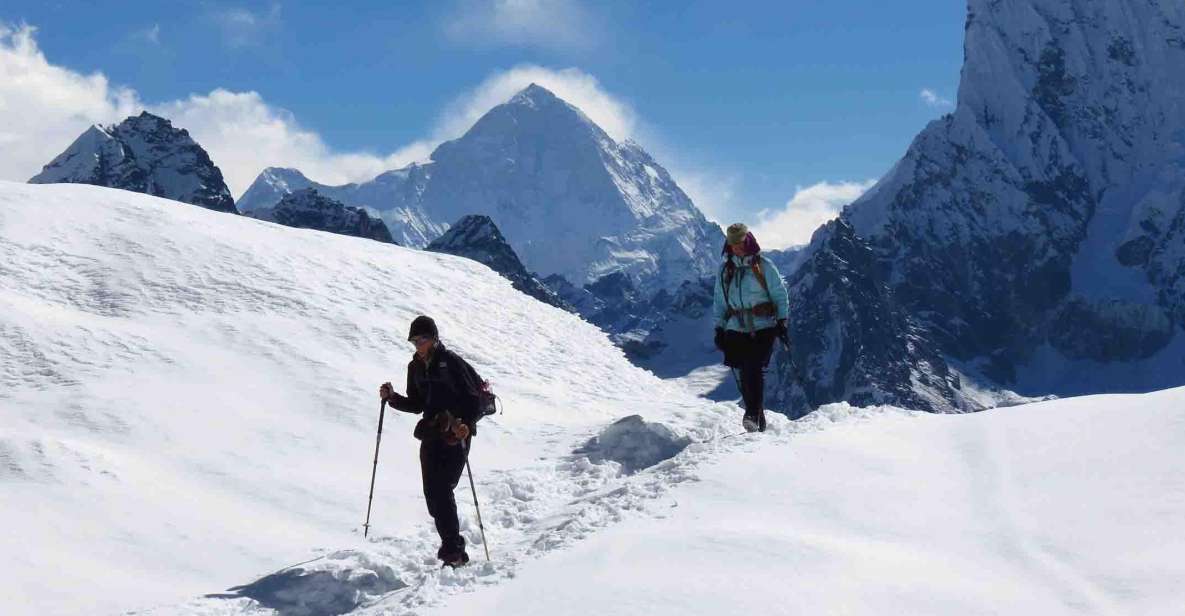
The Everest Three High Pass Trek offers adventurers an exhilarating 19-day journey through some of the most breathtaking landscapes in the Himalayas.
This trek isn’t just about stunning views; it’s also an immersive experience into the rich culture of the Sherpa people. Participants will conquer three iconic passes: Renjo La, Cho La, and Kongma La, each providing unique vistas and challenges.
They’ll explore the enchanting Gokyo Valley, home to striking glacial lakes, and enjoy panoramic views of Mount Everest from Kala Patthar, a highlight that leaves trekkers in awe.
With an affordable price starting from $1,865.78 and a flexible cancellation policy, this trek is perfect for those seeking an unforgettable adventure in one of the world’s most majestic regions.
Day-by-Day Itinerary
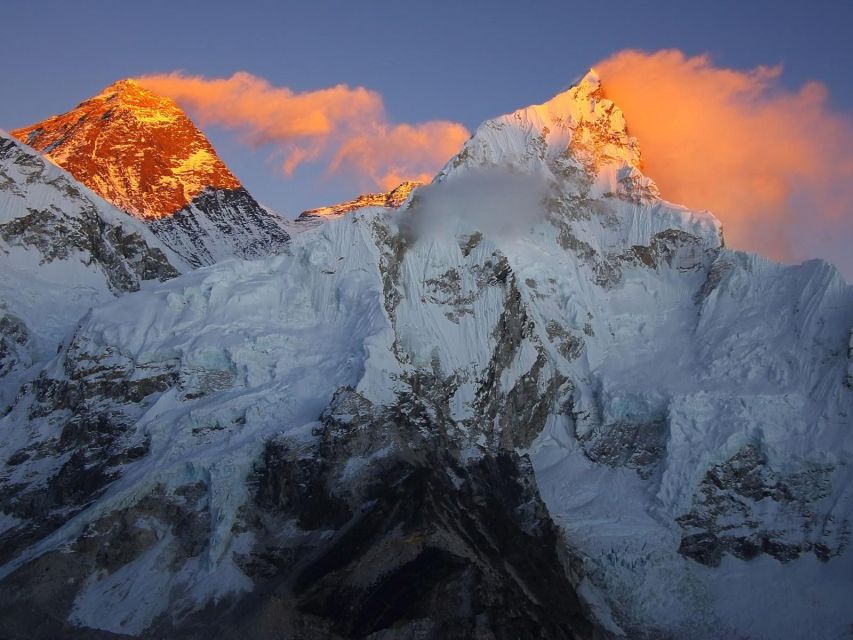
Get ready to embark on an exciting 19-day adventure as trekkers navigate through a carefully planned itinerary that showcases the stunning beauty and culture of the Everest region.
The journey kicks off in Kathmandu, where trekkers prepare for their trek. They’ll fly to Lukla and make their way to Phakding and Namche Bazaar, acclimatizing along the way.
The itinerary includes breathtaking treks to Tengboche, Dingboche, and the iconic Everest Base Camp. Trekkers will conquer three high passes—Kongma La, Cho La, and Renjo La—while enjoying spectacular views.
After exploring Gokyo and the surrounding landscapes, the trek winds back through Thame and Namche before returning to Lukla and culminating in a flight back to Kathmandu.
Adventure awaits!
Essential Inclusions
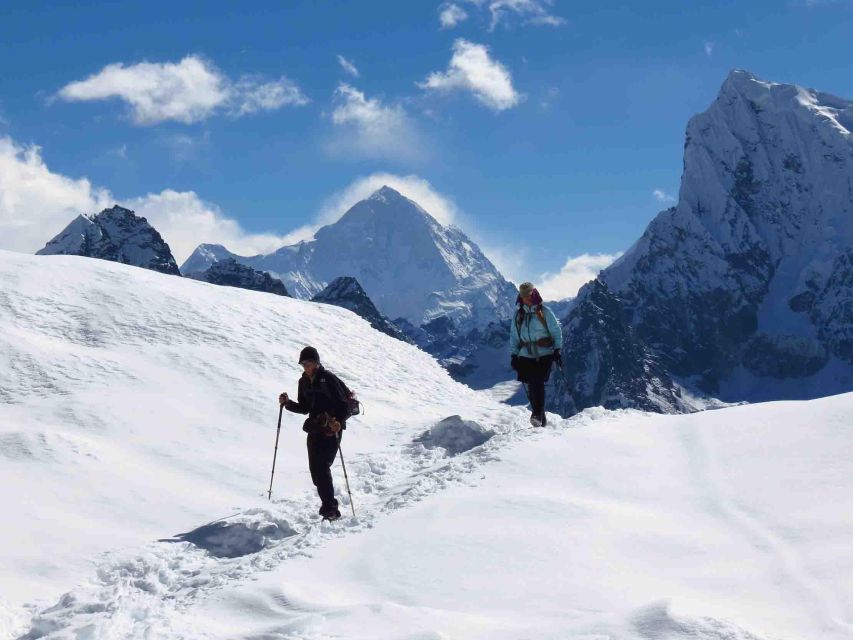
Essential inclusions for the Everest Three High Pass Trek ensure trekkers have a seamless experience, covering everything from airport transfers to necessary permits.
Travelers can expect airport pick-up and drop-off, along with welcome and farewell dinners that set the tone for their adventure.
The package includes TIMS Card and Everest National Park permits, crucial for trekking in this stunning region.
An English-speaking guide accompanies every group, ensuring trekkers have support and knowledge throughout the journey.
Accommodation and meals are included, as well as a porter service—one porter for every two trekkers—to help with gear.
Lastly, round-trip domestic flight tickets to Lukla and travel medical insurance round out the essential inclusions, making the trek both enjoyable and stress-free.
Exclusions to Consider
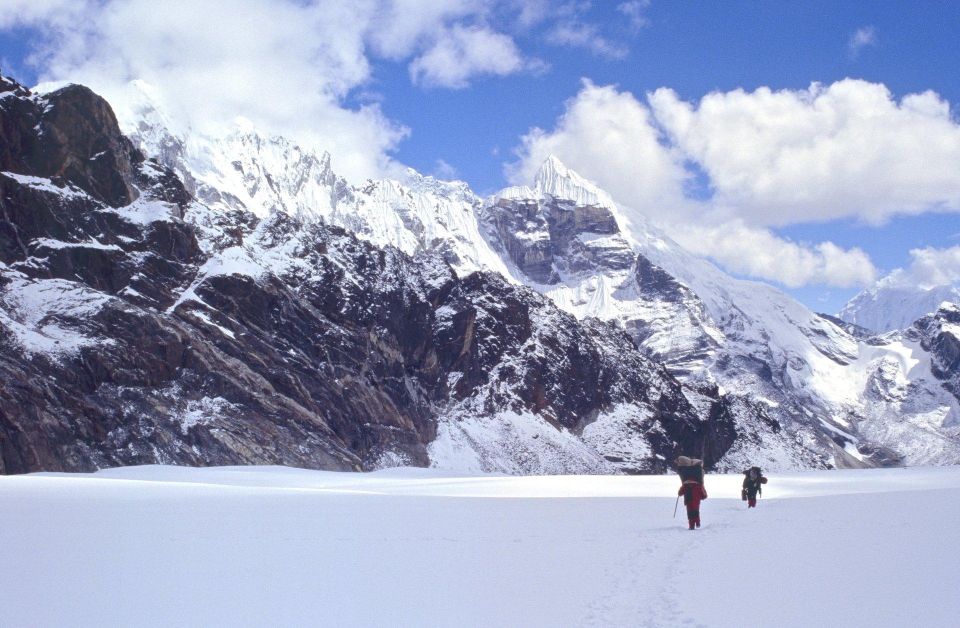
While the Everest Three High Pass Trek package covers many important aspects, there are some exclusions trekkers should keep in mind to ensure they’re fully prepared for the journey.
First off, travelers should budget for personal expenses, such as snacks, beverages, and souvenirs along the trail.
Meals in Kathmandu before and after the trek aren’t included, so dining costs can add up.
Plus, any extra accommodation needed before or after the trek is on the trekkers’ dime.
It’s also essential to consider costs for travel medical insurance beyond the basic coverage provided.
Finally, tips for guides and porters aren’t included, which is a customary practice in trekking culture.
Being aware of these exclusions helps trekkers plan more effectively.
Acclimatization and Safety Tips
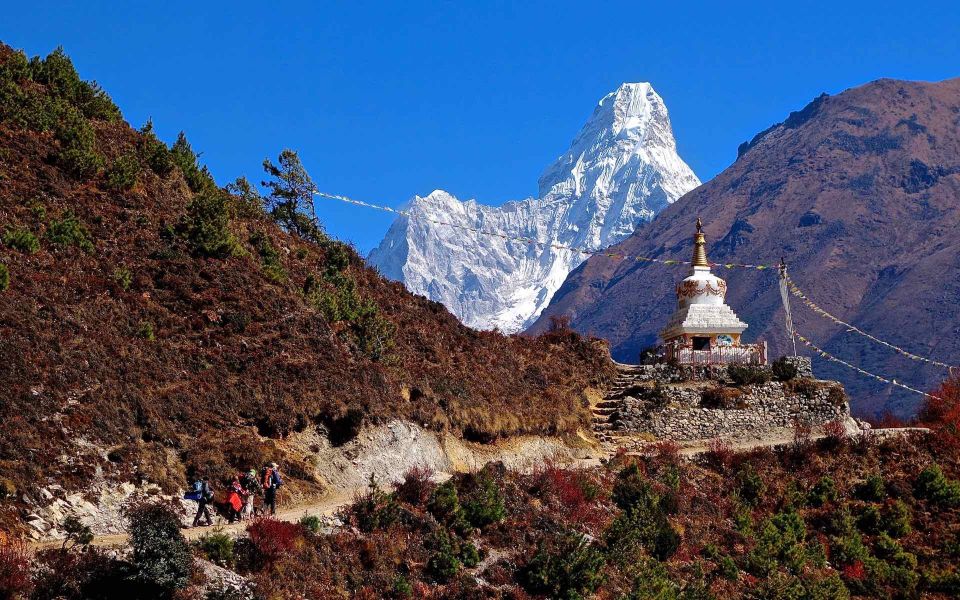
Understanding acclimatization and safety tips is vital for trekkers to enjoy their adventure on the Everest Three High Pass Trek without facing altitude-related issues. Trekkers should ascend slowly, allowing their bodies to adjust to higher elevations. Staying hydrated and recognizing symptoms of altitude sickness are crucial.
Here’s a quick reference table to keep in mind:
| Tip | Why It Matters | Action |
|---|---|---|
| Ascend Slowly | Reduces risk of altitude sickness | Gain no more than 300-500m daily |
| Stay Hydrated | Prevents dehydration-related complications | Drink at least 3-4 liters a day |
| Recognize Symptoms | Early detection can save your trek | Be aware of headaches, nausea, fatigue |
Best Time to Trek
The best time to trek the Everest Three High Pass route is typically during the spring and autumn months, when the weather is most favorable for hiking.
Spring, from March to May, offers mild temperatures and blooming rhododendrons, making it visually stunning.
Autumn, from late September to November, brings clear skies and stable weather, perfect for those breathtaking mountain views.
During these periods, trekkers encounter fewer rain and snow disruptions, enhancing their overall experience.
While winter provides incredible solitude, the harsh conditions can make trekking challenging.
Conversely, the summer monsoon season is often avoided due to heavy rainfall and increased risk of landslides.
Planning a trek during these optimal months ensures a more enjoyable and safer adventure in the Himalayas.
Packing Essentials
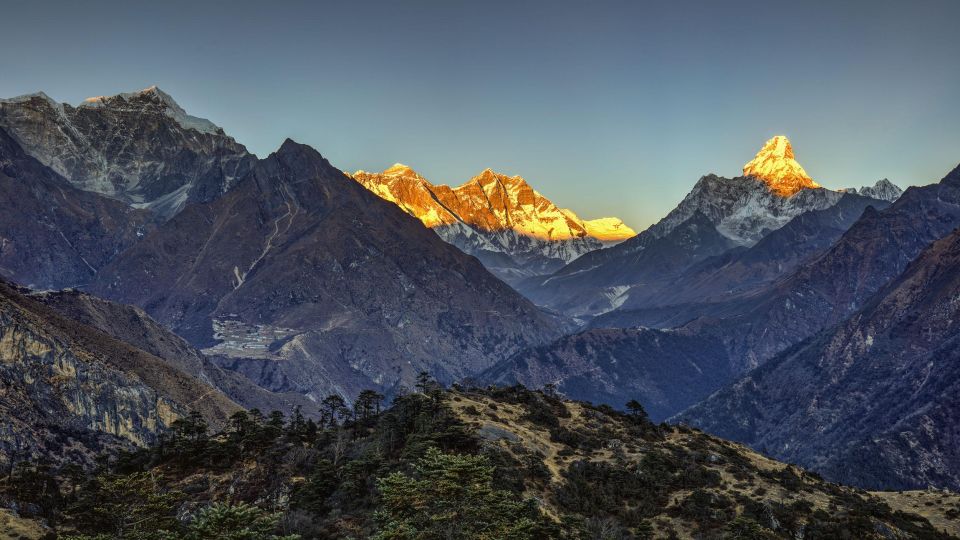
Packing for the Everest Three High Pass Trek requires careful consideration of essential gear to ensure trekkers stay comfortable and safe throughout their journey. A well-thought-out packing list can make all the difference in this challenging adventure.
Here are four must-have items:
-
Layered Clothing: Opt for moisture-wicking base layers, insulating mid-layers, and waterproof outer layers to adapt to changing weather.
-
High-Quality Footwear: Sturdy, waterproof trekking boots with good ankle support are crucial for rocky terrain.
-
Sleeping Gear: A lightweight sleeping bag rated for cold temperatures is essential for restful nights at higher altitudes.
-
Hydration System: A durable water bottle or hydration bladder keeps trekkers hydrated, which is vital at high altitudes.
With these essentials, trekkers can focus on the breathtaking scenery instead of discomfort.
Cultural Insights and Experiences
Immersing oneself in the rich culture of the Himalayan Sherpa people adds an unforgettable dimension to the Everest Three High Pass Trek. Trekkers often interact with locals, experiencing their warm hospitality and unique traditions firsthand. From vibrant festivals to delightful local cuisine, each moment offers insight into their way of life.
| Cultural Aspect | Description | Experience |
|---|---|---|
| Traditional Cuisine | Savor dishes like momos and dal bhat | Enjoy a local meal |
| Festivals | Participate in festivals like Mani Rimdu | Witness lively celebrations |
| Handicrafts | Browse beautiful handmade goods | Support local artisans |
| Religion | Visit ancient monasteries | Learn about Buddhism |
| Community Life | Engage in daily activities | Join locals in chores |
These experiences create lasting memories and deepen the trekker’s connection to the region.
Frequently Asked Questions
What Fitness Level Is Required for This Trek?
For this trek, a moderate fitness level’s required. Participants should enjoy hiking, have stamina for long days, and be comfortable with altitude. Regular training before the trip’ll help ensure a more enjoyable experience.
Are There Any Age Restrictions for Participants?
There aren’t strict age restrictions for participants, but most trekking companies recommend ages between 12 and 70. They believe anyone outside that range should consult a physician before embarking on challenging treks like this.
Can I Customize My Trekking Itinerary?
Yes, they can customize their trekking itinerary. The company understands individual preferences, allowing adjustments to suit different needs. This flexibility ensures trekkers enjoy a personalized experience tailored to their interests and fitness levels.
What Type of Accommodation Can I Expect During the Trek?
During the trek, participants can expect cozy tea houses offering basic amenities. Most have shared bathrooms, warm meals, and stunning mountain views, providing a comfortable base to relax after a day of adventure.
Is There Mobile Network Coverage Along the Trekking Route?
Heard that mobile network coverage along trekking routes can be limited. In some areas, it’s available, but it’s best not to rely on it entirely. Trekkers should prepare for potential connectivity challenges during their adventure.
Not for you? Here's more of our most recent tour reviews happening neaby
Recap
In summary, the Everest Three High Pass Service Trek offers adventurers an unforgettable journey through the majestic Himalayas.
With stunning views, rich cultural experiences, and a well-planned itinerary, trekkers can explore iconic passes and the beautiful Gokyo Valley while ensuring their safety and comfort.
Whether you’re a seasoned hiker or a newcomer, this trek promises to be a breathtaking adventure that leaves lasting memories.
So, lace up those boots and get ready for the trip of a lifetime!
